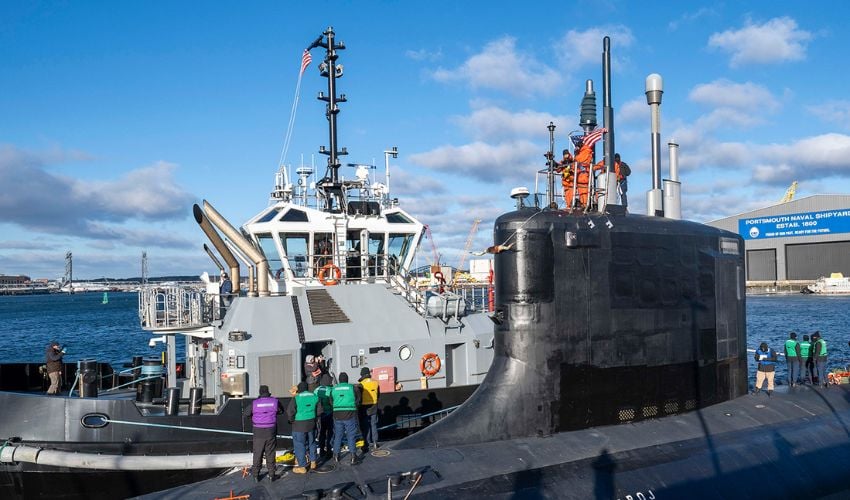NAVSEA Partners with Johns Hopkins APL to Advance AM for Critical Missions

For critical military applications, metal additive manufacturing has been questioned for concerns over porosity, mechanical reliability and reproducability. However, those issues have proved to be addressable, and defense organizations from around the world have gone on to adopt the technology. The U.S. has recently seen headlines about DARPA investing millions in additive manufacturing and the Navy partnering with Velo3D, to name a few. Just last week, Johns Hopkins’ Applied Physics Laboratory (APL) announced its partnership with the Naval Sea Systems Command (NAVSEA) to implement additive manufacturing.
Specifically, APL is assisting NAVSEA in its adoption of laser powder bed fusion (LPBF). Through extensive studies and testing that involve NAVSEA’s technical team, APL’s researchers are proving that additive manufacturing is not just viable, but essential, to NAVSEA’s future. According to Michael Presley, an additive manufacturing engineer in APL’s Research and Exploratory Development Department, people are hesitant to adopt the technology because “most of the previous literature painted a picture of inconsistency.” In response, APL is striving to change that perception.

Additive manufacturing can enable repairs to be made at sea (Photo Credit: NAVSEA)
APL’s Research
APL researchers have conducted numerous studies that speak to the reliability of LPBF technology. In August of 2023, they published a study on variability in the mechanical properties of additively manufactured stainless steel. The study proved that additively manufactured components can maintain performance levels comparable to traditionally manufactured parts. In July of 2024, they investigated the stability of Ti-6Al-4V mechanical properties across LPBF vendors and platforms, showing that industry-wide consistency is achievable. In October 2024, they published a study that demonstrated that precise control over process parameters eliminates worries over porosity.
Collectively, these studies testify to the viability of metal additive manufacturing for naval applications. And it’s not just the navy that can benefit: many maritime projects have leveraged additive manufacturing over the years. “What we’ve shown through rigorous research is that as long as you control your feedstock, process parameters and post-processing, you can get highly consistent material properties,” Presley said.

APL is primarily studying LPBF, but works with other types of AM as well (Photo Credit: IMMENSA)
The Challenge: Consistency Across Vendors
One of the greatest issues for NAVSEA is ensuring that parts sourced from different vendors have a uniform quality. However, this can be difficult due to differences in process control, material properties and manufacturing conditions: irregularities that can mean unpredictable variations in final part quality. To address this, the APL team is establishing clear standards to make sure that each part meets requirements, wherever and however it is made. This predictability is key, especially in ensuring that the technology will be scalable.
So, APL has developed standardized qualification approaches that allow NAVSEA to certify parts. Thanks to their research, NAVSEA has been able to update official manufacturing standards and certification guidelines. This action reduced the requirements for machine certification by over 60%, while still ensuring strict reliability standards.
Real-World Use Cases
The APL’s work also translates into applications. James Borghardt, program manager for Maritime Expeditionary Logistics in APL’s Force Projection Sector, explained: “We don’t just study additive manufacturing. We turn it into something the fleet can use.” Already, additive manufacturing has been used by the Navy to make repairs. In one instance, they used wire-laser directed energy deposition to reverse-engineer a ship part that was not in stock. They completed the part in just five days, whereas obtaining the part via traditional methods would have taken six months to two years.
“That’s what success looks like,” Borghardt said. “Reducing logistics delay time from months to days is a game-changer for operational availability.”
Going forward, NAVSEA and APL hope to apply additive manufacturing not just for repairs and replacements, but for designing mission-critical systems. For this to happen, NAVSEA must be deeply confident in the technology. “Success means a world where we are leveraging additive manufacturing not just for crisis fixes but for primary design and construction,” Justin Rettaliata, NAVSEA’s technical lead for additive manufacturing. “We’re not quite there yet, but our work with APL is getting us closer every day.” For more information, click HERE.
What do you think of NAVSEA’s partnership with Johns Hopkins? Let us know in a comment below or on our LinkedIn or Facebook pages! Plus, don’t forget to sign up for our free weekly Newsletter to get the latest 3D printing news straight to your inbox. You can also find all our videos on our YouTube channel. For more 3D printing news in the aerospace and defense sectors, check out our dedicated page HERE.
Cover Photo Credits: U.S. Navy







